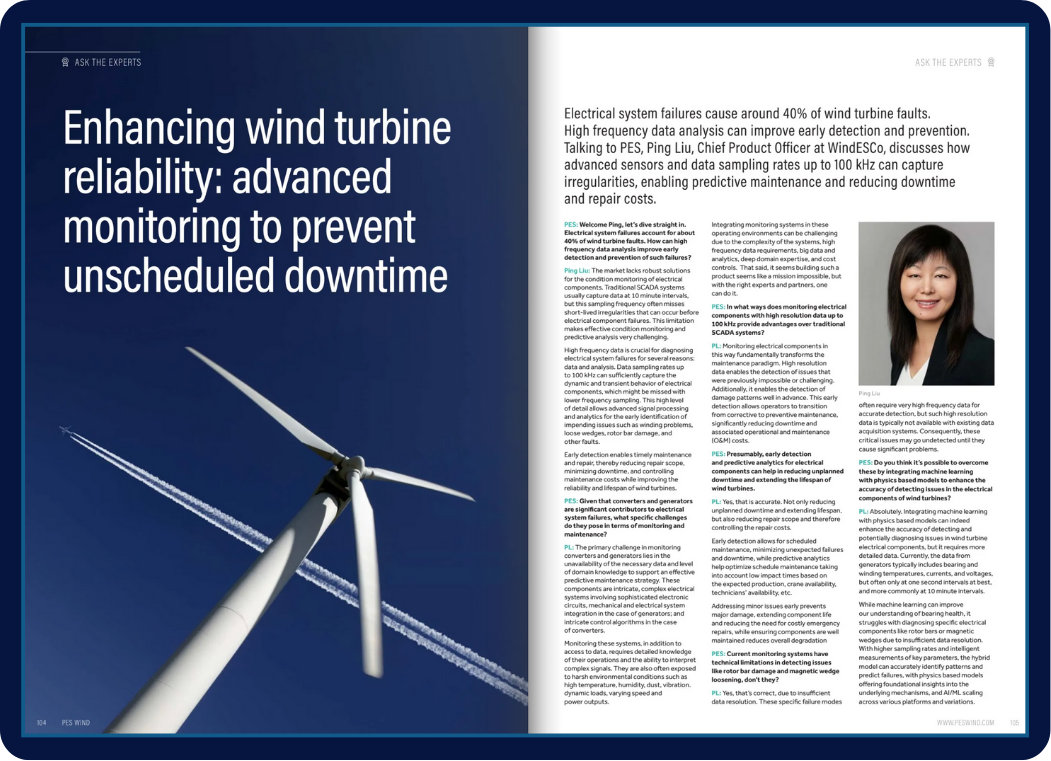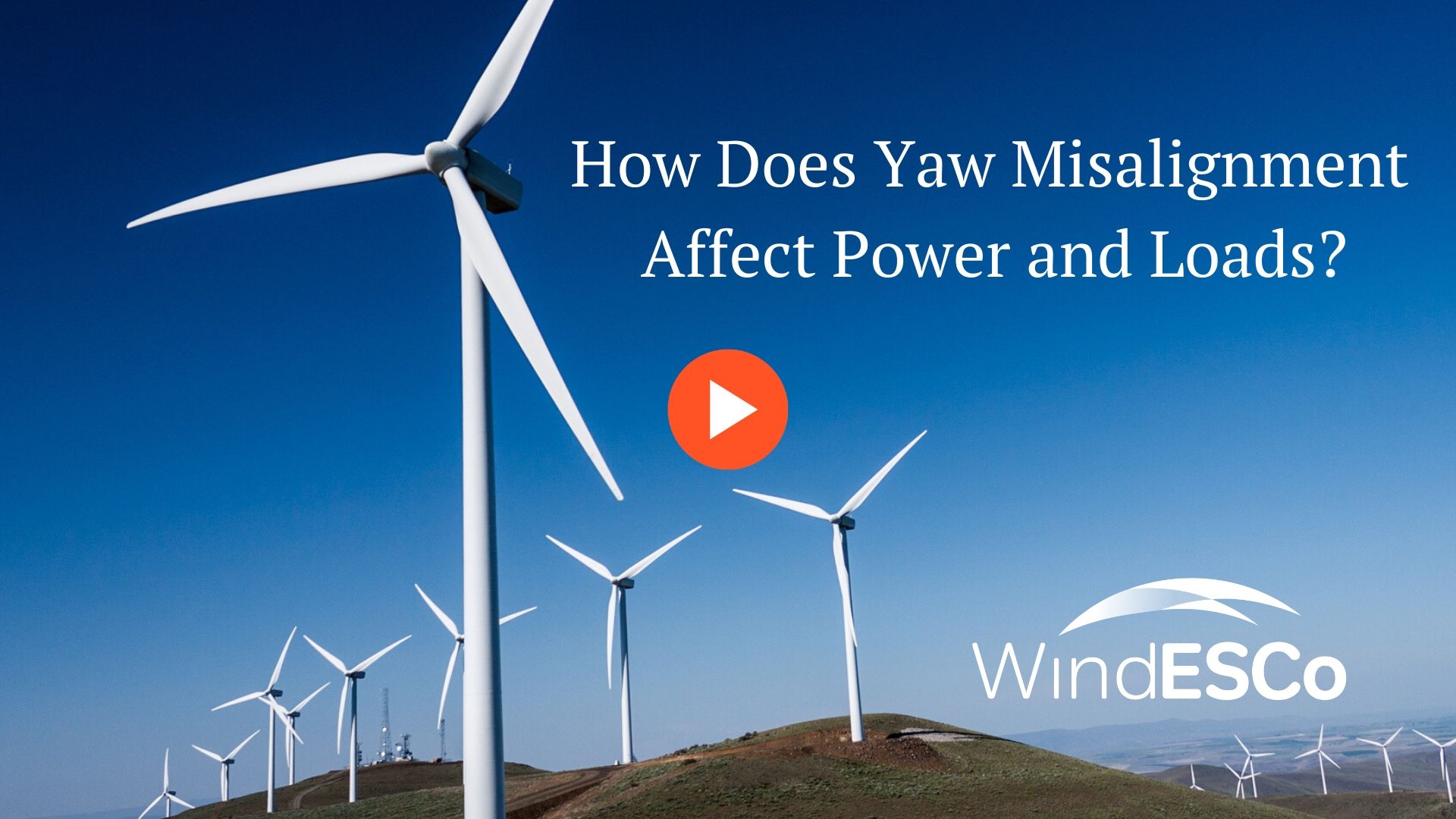Enhancing Wind Turbine Reliability: Advanced Monitoring to Prevent Unscheduled Downtime
In a recent "Ask the Experts" interview with PES Wind (Issue 3, 2024), our Chief Technology Officer, Ping Liu, discusses how advanced sensors and...
1 min read
 Pete Bachant
Jun 20, 2024 4:29:50 PM
Pete Bachant
Jun 20, 2024 4:29:50 PM
.png)
WindESCo has pioneered the detection of yaw misalignment from high-frequency (HF) SCADA data. However, in many cases implementing yaw misalignment corrections can be cumbersome, requiring manual turbine controller parameter updates or even climbing up towers to make mechanical adjustments.
With WindESCo Swarm™, HF SCADA data is collected as part of normal system operation for executing and monitoring our collective control applications such as wake steering. Once in the cloud, yaw misalignment is calculated for all turbines on a rolling basis, so turbines can be corrected continuously with no intervention required.
Why would continuous correction be required, or even helpful? Firstly, “yaw misalignment” is sometimes misunderstood as simply “make all turbines point in the same direction.” What we’ve seen is that yaw misalignment can sometimes be seasonal due to changing wind characteristics, e.g., shear and veer, which alter the rotor-averaged wind vector (RAV), as seen in Figure 1. The turbine needs to be aligned with that vector in order to maximize power production. See Figure 2 for an example of a site whose yaw misalignment, or RAV varies significantly throughout the year, meaning one static adjustment, though beneficial, leaves some potential performance on the table.
Figure 1: Variation in wind speed (a) and direction (b) with height (meters above ground level), from Murphy et al. (2020). The red X marks the rotor axis height. In WindESCo’s yaw misalignment algorithm, a turbine is aligned with the wind vector averaged across the rotor, not just at the axis height. This rotor-averaged wind vector will therefore change height at different levels of shear and veer.
Figure 2: Variation in yaw misalignment detected with the WindESCo algorithm showing strong seasonal trends. Most sites will not be this variable, but nearly all have some degree of variability.
Additionally, a wind sensor may be replaced, negating any previous yaw misalignment adjustments. With WindESCo Swarm™, these differences are detected and corrected automatically, providing on the order of 1% additional AEP in typical cases.
Get in touch with us today if you’d like to effortlessly monitor and correct yaw misalignment at your site.

In a recent "Ask the Experts" interview with PES Wind (Issue 3, 2024), our Chief Technology Officer, Ping Liu, discusses how advanced sensors and...
.png)
In part two of this mini-blog series, WindESCo walks you through what to consider when compiling a lookup table, what is required, and what...

We've previously discussed yaw misalignment in-depth: what it is, what causes it, and how to measure it in your wind project. Today we'll be diving...